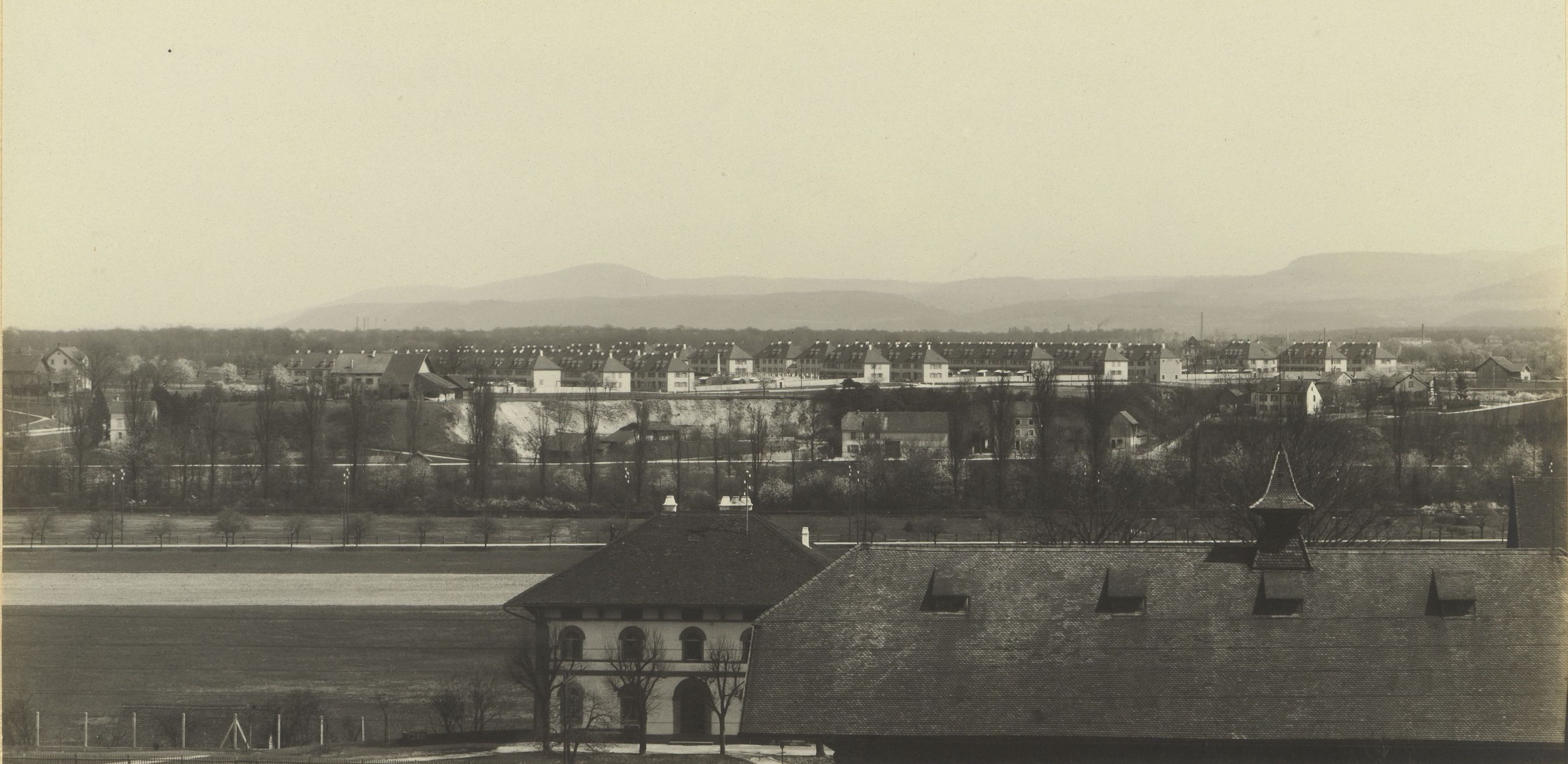PAST TALKS 2021
23 November 2021
CERN: From Precision Architecture to Precision Territory, 1952–2018
NILS HAVELKA
gta, ETH Zurich
Respondent: Andreas Kalpakci (gta, ETH Zurich)

© CERN
At the western end of the Arc Lémanique, at the foot of the Jura Mountains, lies the largest scientific instrument in the world: the Large Hadron Collider (LHC). While its immense scale is a much-noted feat of size, it is also a feat of extreme precision: even at 27 kilometers in diameter, it is the most accurately built and monitored construction in the world with a deviation of just one centimeter over the total length. It is, in fact, the latest example in a legacy of contribution to the measure of territory by the European Organization for Nuclear Research (CERN). Despite CERN correctly being known as an institution of pure science, the complexity of its research apparatuses make it necessary for CERN scientists to work on applied science that enables the construction and operation of their research infrastructure. From the 1950s continuing through to today, CERN has developed and adapted measurement instruments for its own facilities that have become key technologies from the highly specific--monitoring dam deformation--to the ubiquitous: the development of laser ranging, Global Positioning Systems (GPS), and even the World Wide Web. This research project thus contends that CERN is a key site for the propagation of a view on territory that fundamentally shifts the measure and management of both its home country of Switzerland and the globe as a whole. Taken together, these technologies developed at CERN constitute important contributions to an understanding of the territory as something that can be understood at full scale and in real time--shifts that underpin our ways of mapping, visualizing, and ultimately designing territory and architecture today.
***
Two or Three Projects I Know
on Cooperative Living
Two or Three Projects I Know
on Cooperative Living
STÉPHANIE SAVIO
EPFL
Respondent: Nitin Bathla (ETH Zurich)

At the turn of the twentieth century, cooperative movements emerged in Central Europe, grouping and organising producer and consumer societies. Parallel to arising interventions in liberal economics, aesthetic visions of a built environment for men and later women of civil and political rights helped themself with contemporary socialist ideals. Architectural projects were commissioned by cooperative organisations to later celebrated modern architects.
Settlement Freidorf in Muttenz near Basel, 1919
Boosted by increased membership due to wartime precarity, Swiss union of consumers’ societies allied with a temporarily established society for countryside colonisation, hired architect Hannes Meyer to plan a first cooperative settlement. Collective property was offered to affiliated workers and movement leaders, at the condition of voluntary participation in cultural, economic and political organisation.
Kibbutzim in Mandatory Palestine, mid 1920s
Cooperative agricultural settlements founded by immigrants started organising as movements – one Marxist, another apolitical, to challenge the Zionist organisation’s envisioned European references and established own planning offices for centralising knowledge on three collective settlements’ types. Arieh Sharon was an early settler, architect and later head of national planning for the Israeli State (1948).
Federal school of ADGB in Bernau near Berlin, 1928
The newly opened architecture workshop of the Bauhaus, led by Meyer and Hans Wittwer, was chosen to plan the first school of the German federation of trade unions. To house affiliated workers’ training on social economics and management – in order to cope with multiplying mandates by national government, architects were asked to aesthetically impress occupants with modern spatial qualities representing cooperation. Sharon led the project execution for Meyer’s office.
Architectures associated with the political idea of cooperation – distinct from social housing, enable to trace the historical development of a middle class, accessing diverse properties through collective organisations. Beyond the individual house as a miniature of the bourgeoisie, several alternatives were envisioned before the end of the second World War. A comparative study let us discover an experimental history, trying to construct a new society.
Settlement Freidorf in Muttenz near Basel, 1919
Boosted by increased membership due to wartime precarity, Swiss union of consumers’ societies allied with a temporarily established society for countryside colonisation, hired architect Hannes Meyer to plan a first cooperative settlement. Collective property was offered to affiliated workers and movement leaders, at the condition of voluntary participation in cultural, economic and political organisation.
Kibbutzim in Mandatory Palestine, mid 1920s
Cooperative agricultural settlements founded by immigrants started organising as movements – one Marxist, another apolitical, to challenge the Zionist organisation’s envisioned European references and established own planning offices for centralising knowledge on three collective settlements’ types. Arieh Sharon was an early settler, architect and later head of national planning for the Israeli State (1948).
Federal school of ADGB in Bernau near Berlin, 1928
The newly opened architecture workshop of the Bauhaus, led by Meyer and Hans Wittwer, was chosen to plan the first school of the German federation of trade unions. To house affiliated workers’ training on social economics and management – in order to cope with multiplying mandates by national government, architects were asked to aesthetically impress occupants with modern spatial qualities representing cooperation. Sharon led the project execution for Meyer’s office.
Architectures associated with the political idea of cooperation – distinct from social housing, enable to trace the historical development of a middle class, accessing diverse properties through collective organisations. Beyond the individual house as a miniature of the bourgeoisie, several alternatives were envisioned before the end of the second World War. A comparative study let us discover an experimental history, trying to construct a new society.